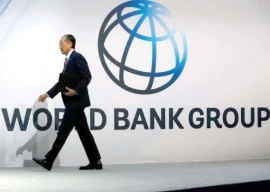
Pakistan’s current account deficit (CAD) has fallen by a huge 78% to $400 million in December 2022, suggesting that the situation over the balance of international payments is coming back under the government’s control.
According to data published by the State Bank of Pakistan (SBP) on Wednesday, the country’s CAD – the difference between the country’s higher foreign expenditures and low income – stood at $1.86 billion in the same month last year.
The drop in the deficit, however, came at the cost of growth as economic activities came to a partial halt in the month under review. Import payments, exports earnings and the inflow of workers’ remittances all declined significantly.
The government’s administrative measures to control imports, amid crashing foreign exchange reserves, has led towards partial or complete closure of industries. The situation also impacted export earnings, as a large portion of imports are made by export industries like textile makers.
Moreover, the government’s control over the rupee-dollar exchange rate in the interbank market has played a huge role in diverting inflows from export earnings and workers’ remittances to illegal Hawala-hundi markets offering better exchange rates.
Cumulatively, in the first half (Jul-Dec) of the FY2023, CAD declined by 60% to $3.66 billion, compared to $9.09 billion in the same period of the previous fiscal year.
While addressing Karachi’s business community during the day, SBP Governor Jameel Ahmed denied allegations that the central bank is injecting US dollars into the interbank market to control the rupee. “The time has changed… the imports are financed only through inflows of exports and workers’ remittances.”
Presently, the country’s foreign exchange reserves are at a three-week import cover at $4.3 billion.
The business community, however, flayed the government and central bank’s policies, blaming administrative controls for putting businesses on halt and employment at stake in the country.
Pak-Kuwait Investment Company Head of Research Samiullah Tariq said the CAD has remained lower than the target. “The CAD number at $400 million for December suggests that the full-year’s CAD will remain notably low at $7 billion in FY23, against the central bank’s estimate of 3.5% (around $10 billion) for the year,” said Tariq.
He, however, stated the government should speed-up efforts to resume the stalled the International Monetary Fund (IMF) loan programme as the foreign exchange crisis is hitting the economy hard.
The revival of the programme will also unlock financing promised by other multilateral and bilateral creditors worth billions of dollars. The world community pledged around $10 billion in flood relief to Pakistan at the Geneva moot last week. The financing will not only easy economic woes, but will also help the nation buy time to fix fundamental issues in the economy to achieve sustainable economic growth.
He anticipated that economic activities will remain sluggish in the remaining six months (Jan-Jun) of FY2023. “Business and economic activities will start improving from the start of the next fiscal year in July 2023.”
Meanwhile, the import of goods dropped by 18% to $2.51 billion in the first half of FY23, compared to $36.09 billion in the same period of the previous year. Exports also decreased 7% to $14.21 billion in the half year, compared to $15.24 billion in the corresponding period of the previous year.
Workers’ remittances also fell by 11% to $14.05 billion in the first six-months of FY23 compared to $15.80 billion in the same period of the last year.
Published in The Express Tribune, January 19th, 2023.
Like Business on Facebook, follow @TribuneBiz on Twitter to stay informed and join in the conversation.










1730379446-0/WhatsApp-Image-2024-10-31-at-17-56-13-(1)1730379446-0-270x192.webp)










COMMENTS
Comments are moderated and generally will be posted if they are on-topic and not abusive.
For more information, please see our Comments FAQ